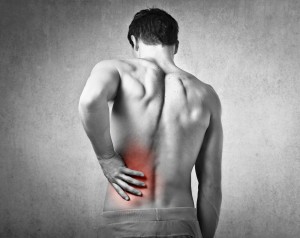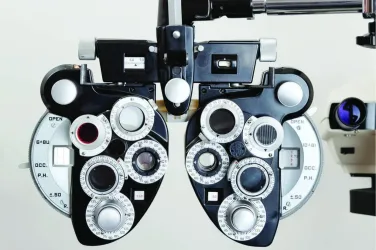By Pamela Hammonds
Spine pain can range from a small twinge that temporarily sidelines you to chronic pain that immobilizes you for days—even months or years. Nearly everyone experiences some level of spine pain in their lifetime. In fact, lower back pain is the second most frequent reason to visit a physician for a chronic condition, the fifth most common cause for hospitalization, and the third most frequent reason for a surgical procedure.
How do you find relief?
 When spine pain strikes, you might initially find relief by applying an ice pack at the source of pain. (Never apply ice directly to skin.) Taking an over-the-counter pain reliever such as acetaminophen, ibuprofen or naproxen sodium (i.e. Tylenol, Advil or Aleve) and resting may allow pain to subside while your body recovers.
When spine pain strikes, you might initially find relief by applying an ice pack at the source of pain. (Never apply ice directly to skin.) Taking an over-the-counter pain reliever such as acetaminophen, ibuprofen or naproxen sodium (i.e. Tylenol, Advil or Aleve) and resting may allow pain to subside while your body recovers.
But for persistent pain or loss of mobility from a serious injury or condition, seek medical attention. Your physician can refer you to a specialist, if needed, such as a neurosurgeon, orthopedic doctor, chiropractor, physiatrist or an anesthesiologist (who specializes in interventional spine pain management).
Depending on the severity of your condition, pain relief might come from one or a combination of these sources:
Injections—given to help reduce pain and improve function by reducing swelling and irritation or for diagnosis. Common injections include steroid injections (cervical, lumbar and sacroiliac) to treat inflammation and Facet Joint Injections to determine the source of pain and as therapy.
Surgery—typically considered for spine pain after all non-surgical options have been explored and/or proven to be ineffective. Surgery can include:
- Anterior Cervical Discectomy and Fusion
- Artificial Disc Replacement (ADR)
- Cervical Disc Replacement
- Cervical Laminoplasty
- Kyphoplasty
- Lumbar (Open) Microscopic Discectomy
- Lumbar Radiofrequency Neurotomy
- Micro Endoscopic Dicectomy
- Micro Endoscopic Posterior Cervical Discectomy
- Percutaneous Vertebral Augmentation (PVA)
- Posterior Cervical Foraminotomy
- Spinal Fusion
If your physician determines surgery to be your best option for long-term pain relief, be sure to ask if you have options and/or seek a second opinion. Minimally-invasive procedures typically provide lower risks and quicker healing times than traditional surgery.
Physical Therapy and Alternative Medicine—such as chiropractic care, acupuncture, massage, exercise and stretching can provide tremendous relief for back pain and allow patients to recover from procedures more effectively. Many spine care facilities offer on-site therapy or refer to chiropractors or outside sources to provide complete care.
An ounce of prevention
Escaping back injuries is the best way to avoid debilitating pain, costly treatments and missed work. Here are a few ways to keep your back healthy.
Exercise: Moves that strengthen your core help support your spine. Try yoga and Pilates, or ask a personal trainer to suggest exercises to keep you fit. Daily stretching can also keep muscles flexible and helps you avoid straining. KnowYourBack.org offers a variety of exercises you can do at home with little to no equipment needed.
Lifestyle: Keep excess pounds off. Make sure your diet includes food rich in calcium and vitamin D; increase bone density with weight-bearing exercise such as weight-lifting and walking. If you smoke, stop. Limit your alcohol intake. Avoid fad diets. If you have a family history of bone disease, ask your doctor how to lower your risks.
Habits: Avoid prolonged periods of sitting or standing; moving your spine encourages fluid to circulate through the discs. “The worst posture is sitting and leaning forward,” said Nick Shamie, M.D., associate professor of orthopedic neurosurgery at UCLA and a spokesman for the American Academy of Orthopaedic Surgeons. Locking your pelvis and flexing your spine puts pressure on the front of the vertebrae, where your discs are. “This uneven pressure on a disc puts it at high risk of rupture.” Learn to engage your core when exerting yourself. Don’t twist as you lift. Avoid holding heavy objects lower than your knees or higher than your shoulder.
Know your backbone
When you meet with a physician to discuss spine pain, he or she will likely cite your source of pain as either:
- cervical (neck)
- thoracic (chest/trunk)
- lumbar (low back)
- sacral (pelvic)
The spinal cord is shorter than the length of the bony spinal column, extending down only to the last of the thoracic vertebrae. Nerves that extend from the spinal cord from the lumbar and sacral levels must run in the vertebral canal for a distance before they leave the vertebral column.
Your Spine Online
Helpful sources include:
- KnowYourBack.org (North American Spine Society)
- WebMD.com/back-pain
- Spine.org
- AAOS.org (American Academy of Orthopaedic Surgeons)









